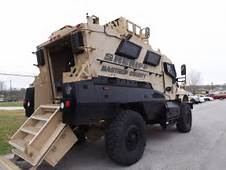Defense Reutilization Management Office (DMRO) is the place where military surplus equipment goes to die. When units decide that a piece of equipment is surplus to its requirements or is broken or worn out, to get it off the inventory, they send it to DMRO. DMRO may do a certain amount of repair to make the equipment serviceable. Most equipment is placed in a database and offered to customers that have access to the system (law enforcement, fire, EMS, ETC). There are some quirks to the system, as we found out, Cops-military–gear-make-comeback.
As a narcotics task force, we had access to DMRO we also had National Guard soldiers assigned to our unit. It was they that introduced the boss to the concept of DMRO. He was resistant at first. But they convinced the boss this was a good deal. The first foray into the world of DMRO was to obtain flight suits, Battle Dress Utilities (BDU), Field jackets and boots.
Our investigations carried us into “speed labs.” An operating speed lab is a bomb waiting to go off. Flight suits are made of Nomex. Nomex is flame retardant and worn by race car drivers and flight crews, where a fire is a possibility. Th flight suit would offer a level of protection not provided by blue jeans and a tee shirt.
The BDU’s and boots are an acknowledgment that some environments were so hostile that at the end of an operation officers would throw their clothes away. When we came home and stripped down in the backyard and hosed off with the garden hose, the family knew it was one of those days.
Guys that have been there are saying about now, yup been there, done that, got the tee shirt. The Radley Balko’s of this world are still claiming we wear BDU’s because it is stylish.
Armed with a shopping list, our National Guard contingent set off to the nearest DMRO office to pick up two sets of BDUs per man, one pair of boots, one field jacket per man and as many flight suits as they could get. We’re talking about equipping sixteen agents.
The first indication they had that something was wrong, was when the guy from DMRO looked at their paperwork. He confirmed that he had the order ready, followed by the sound of a fork lift firing up. Out of the warehouse appeared a forklift carrying a pallet. On the pallet was a single box four feet square. The fork lift operator dropped the box and disappeared back into the warehouse, only to reappear with another pallet similarly equipped. Back into the ware house, only to appear yet again with a third pallet. Finally, one more foray into the warehouse and the fourth and final pallet appeared. None of the boxes were full to the brim, but it wouldn’t have taken much to fill them. The Guard guys tried to explain that they only needed enough for sixteen guys. The DMRO guys explained it was all or nothing at all.
The guard guys huddled and like scroungers everywhere decided since they needed this stuff other individuals would have a need. They could equip the task force and have a surplus to trade to other agencies. They took it all.
When the Guard Guys returned to the office, we discovered the next quirk about DMRO. Units turned in stuff because they didn’t want it anymore. There was a reason they didn’t want it. We opened the box of boots. Inside, on top were brand new boots, never been worn. All rights, no lefts. Below that layer were pairs of boots that were used and seemed to be either female size six or male size thirteen. From hundreds of pairs of boots, we found enough that all sixteen of us got boots.
It was the same with the BDU’s size small or size extra large. So it went with the field jackets and the flight suits. When we were done with picking, we still had four pallets of stuff. Despite the best efforts of the National Guard guys, two years later we still had pallets of left boots, off sized BDU’s and field Jackets.
It is good to be the boss. He looked at those pallets and said, “Get rid of that stuff, today,” and walked away secure in the knowledge that it would be done. How, was anybody’s guess. There were at least two problems with that command. The most obvious recipients; Goodwill and the Salvation Army would not take our surplus; even they have a cull factor. Secondly, it is against a scavenger’s nature to throw anything away. Although this stuff had sat unused for two years, our scavengers knew in their hearts that this stuff had value. They just had to find the right outlet.
They loaded all four pallet boxes into a stake bed truck, also a DMRO acquisition and set off to “get rid of that stuff.” It was early December the weather was starting to get cool, and dusk came at five o’clock. In a desperation move, the guard guys bought a case of beer. They then drove to the railroad tracks behind the County Jail and parked. In days gone by this was the heart of San Antonio’s red light district. It was now the hang out for the homeless population that waited for handouts from the soup kitchen around the corner.
The beer was the come on. With a beer the homeless got BDU’s, a field jacket and boots with two left feet, size may or may not match. Within a half hour the beer, the BDU’s, and the National Guard were all gone.
For two weeks afterward SAPD patrol claimed the whole area looked like it was under the occupation of a homeless army.
